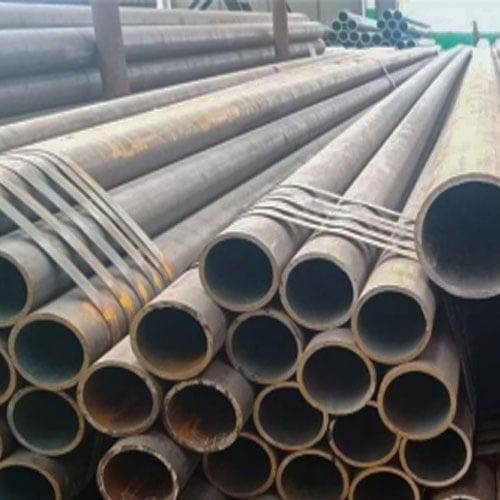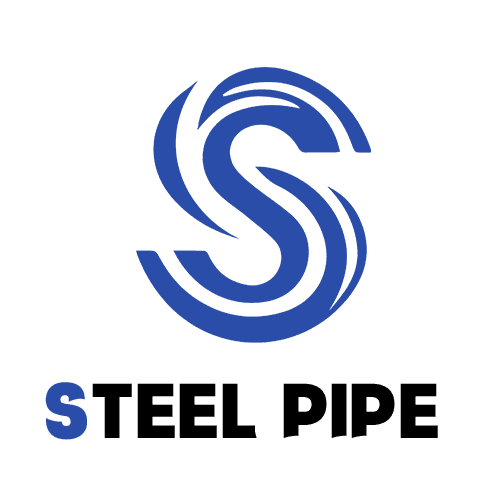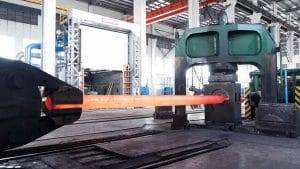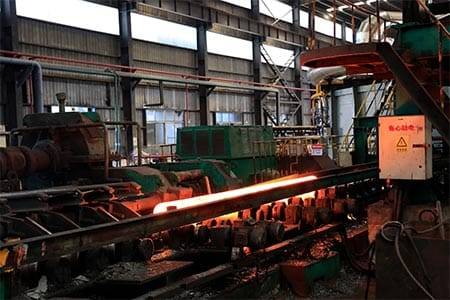Introduction
In the world of industrial engineering, selecting the right materials for equipment is crucial for ensuring safety, efficiency, and longevity. Boiler tubes are an essential component in various industries, including power generation, petrochemical processing, and manufacturing. The correct boiler tube specification can make the difference between a reliable, long-lasting system and one that fails prematurely, leading to costly downtime and repairs. This blog will guide you through the process of choosing the right boiler tube specification, covering the key factors to consider, the different types of boiler tubes available, and the common applications for each type.
This is our Facebook account. Welcome to learn more about our company’s products and stories.
Understanding Boiler Tube Specifications

What is a Boiler Tube?
A boiler tube is a type of piping used in boilers to transfer heat from the combustion process to the water or steam contained within the boiler. These tubes must withstand high temperatures and pressures, as well as the corrosive environment inside the boiler. Boiler tubes are typically made from high-strength steel alloys and are available in a variety of sizes and specifications to suit different applications.
Why Boiler Tube Specification Matters
The specification of a boiler tube is critical because it determines the tube’s ability to perform under specific operating conditions. Factors such as temperature, pressure, corrosion resistance, and material strength all play a role in determining the appropriate specification. Choosing the wrong specification can lead to tube failure, which can cause significant damage to the boiler and pose serious safety risks.
Key Components of Boiler Tube Specification
When selecting a boiler tube specification, several key factors must be considered:
- Material Composition: The chemical composition of the material determines its strength, heat resistance, and corrosion resistance. Common materials include carbon steel, alloy steel, and stainless steel.
- Size and Dimensions: Boiler tubes come in various sizes, with specific outer diameters (OD), wall thicknesses, and lengths. The size must be appropriate for the boiler’s design and operating conditions.
- Temperature and Pressure Ratings: The tube’s ability to withstand the boiler’s operating temperature and pressure is crucial. Specifications often include maximum allowable temperatures and pressures.
- Corrosion Resistance: Depending on the environment, the boiler tube may need to resist various forms of corrosion, including oxidation, sulfidation, and hydrogen embrittlement.
- Standards and Certifications: Boiler tubes must meet industry standards such as ASTM, ASME, and DIN to ensure quality and safety.
Factors to Consider When Choosing Boiler Tube Specification
Operating Environment
The operating environment is one of the most critical factors in determining the right boiler tube specification. Consider the following aspects:
- Temperature: High-temperature environments require tubes made from materials that can maintain their strength and resist oxidation at elevated temperatures. Alloy steels, such as those containing chromium and molybdenum, are often used in these conditions.
- Pressure: High-pressure boilers demand tubes that can withstand significant internal stresses without deforming or failing. The wall thickness and material strength are key considerations here.
- Corrosive Elements: Boilers operating in corrosive environments, such as those exposed to sulfur or chlorine, require tubes with enhanced corrosion resistance. Stainless steels or alloys with added chromium and nickel are commonly used in these situations.
Material Selection
The material composition of the boiler tube is crucial for ensuring its performance and longevity. Here are some common materials used in boiler tubes:
- Carbon Steel: Widely used in low to moderate temperature applications, carbon steel offers good strength and is cost-effective. However, it is less resistant to corrosion and high temperatures compared to alloy steels.
- Alloy Steel: Contains additional elements such as chromium, molybdenum, and vanadium, which enhance its strength, temperature resistance, and corrosion resistance. Alloy steel is commonly used in high-pressure and high-temperature boilers.
- Stainless Steel: Known for its excellent corrosion resistance, stainless steel is often used in environments where exposure to corrosive elements is a concern. It also retains its strength at high temperatures.
Size and Dimensions
The size and dimensions of the boiler tube must match the design requirements of the boiler. Important parameters include:
- Outer Diameter (OD): The outer diameter of the tube affects the flow rate and heat transfer efficiency. Larger diameters are typically used in industrial boilers, while smaller diameters are common in residential or smaller commercial boilers.
- Wall Thickness: The wall thickness must be sufficient to withstand the internal pressure of the boiler without failing. Thicker walls are required for high-pressure applications.
- Length: The length of the tube should match the design specifications of the boiler. Custom lengths may be required for specific applications.
Standards and Certifications
Boiler tubes must comply with relevant industry standards and certifications to ensure quality and safety. Some of the most common standards include:
- ASTM A192: Standard specification for seamless carbon steel boiler tubes for high-pressure service.
- ASTM A213: Standard specification for seamless ferritic and austenitic alloy steel boiler tubes for high-temperature service.
- ASME SA-213: The ASME equivalent of ASTM A213, commonly used in the manufacture of power generation boilers.
- DIN 17175: German standard for seamless tubes made of heat-resistant steels.
Cost Considerations
While cost should not be the primary factor in selecting a boiler tube specification, it is still an important consideration. The cost of the material, manufacturing, and any additional processing (such as heat treatment) can vary significantly depending on the specification. It’s essential to balance the cost with the required performance and safety standards.
Common Boiler Tube Specifications and Their Applications
ASTM A192
Overview
ASTM A192 is a standard specification for seamless carbon steel boiler tubes used in high-pressure service. These tubes are commonly used in power plants and industrial boilers where high-pressure steam is generated.
Key Features
- Material: Carbon steel
- Temperature Rating: Suitable for moderate to high temperatures
- Pressure Rating: High-pressure service
- Applications: Power generation, industrial boilers
ASTM A213
Overview
ASTM A213 covers seamless ferritic and austenitic alloy steel boiler tubes for high-temperature service. These tubes are often used in superheaters, reheaters, and heat exchangers.
Key Features
- Material: Alloy steel (ferritic and austenitic)
- Temperature Rating: High-temperature service
- Pressure Rating: Moderate to high pressure
- Applications: Superheaters, reheaters, heat exchangers
ASTM A335
Overview
ASTM A335 is a standard specification for seamless ferritic alloy steel pipe for high-temperature service. It is commonly used in boiler systems, power generation, and petrochemical applications.
Key Features
- Material: Ferritic alloy steel
- Temperature Rating: High-temperature service
- Pressure Rating: High pressure
- Applications: Boilers, power generation, petrochemical industry
ASME SA-213
Overview
ASME SA-213 is the ASME equivalent of ASTM A213, specifying seamless ferritic and austenitic alloy steel boiler tubes for high-temperature service. These tubes are widely used in power generation boilers.
Key Features
- Material: Alloy steel (ferritic and austenitic)
- Temperature Rating: High-temperature service
- Pressure Rating: Moderate to high pressure
- Applications: Power generation, heat exchangers
DIN 17175
Overview
DIN 17175 specifies seamless tubes made of heat-resistant steels, primarily used in the construction of boilers, pipelines, and equipment operating at high temperatures.
Key Features
- Material: Heat-resistant steel
- Temperature Rating: High-temperature service
- Pressure Rating: High pressure
- Applications: Boilers, pipelines, high-temperature equipment
Table: Comparison of Common Boiler Tube Specifications
| Specification | Material | Temperature Rating | Pressure Rating | Common Applications |
|---|---|---|---|---|
| ASTM A192 | Carbon steel | Moderate to high | High | Power generation, industrial boilers |
| ASTM A213 | Alloy steel | High | Moderate to high | Superheaters, reheaters, heat exchangers |
| ASTM A335 | Ferritic alloy steel | High | High | Boilers, power generation, petrochemical industry |
| ASME SA-213 | Alloy steel | High | Moderate to high | Power generation, heat exchangers |
| DIN 17175 | Heat-resistant steel | High | High | Boilers, pipelines, high-temperature equipment |
How to Choose the Right Boiler Tube Specification

Assessing Your Specific Needs
Before selecting a boiler tube specification, it’s essential to assess your specific needs and operating conditions. Consider the following:
- Type of Boiler: The type of boiler (e.g., fire-tube, water-tube, or electric) will influence the choice of tube specification.
- Operating Temperature and Pressure: Determine the maximum temperature and pressure the tubes will be exposed to during operation.
- Corrosive Environment: Identify any corrosive elements present in the operating environment, such as sulfur, chlorine, or water impurities.
- Required Longevity: Consider the expected lifespan of the boiler tubes and whether the specification provides adequate durability.
Consulting Industry Standards
Industry standards such as ASTM, ASME, and DIN provide valuable guidelines for selecting the appropriate boiler tube specification. These standards outline the material composition, mechanical properties, and testing requirements for boiler tubes, ensuring that they meet the necessary performance and safety criteria.
Balancing Cost and Performance
While selecting a boiler tube specification that meets all technical requirements is essential, it’s also important to consider the cost. Balancing cost and performance involves choosing a specification that provides the necessary strength
, durability, and corrosion resistance without exceeding budget constraints.
Working with a Trusted Supplier
Selecting the right boiler tube specification often requires collaboration with a trusted supplier who can provide expert guidance and high-quality materials. A reputable supplier will help ensure that the boiler tubes meet the required specifications and are sourced from reliable manufacturers.
Conclusion
Choosing the right boiler tube specification is a critical decision that impacts the safety, efficiency, and longevity of your boiler system. By understanding the key factors that influence boiler tube specifications, such as material composition, temperature and pressure ratings, corrosion resistance, and industry standards, you can make an informed decision that meets your specific needs. Whether you are working with carbon steel, alloy steel, or stainless steel, selecting the appropriate specification ensures that your boiler operates reliably and efficiently, minimizing the risk of failure and maximizing the lifespan of your equipment.
FAQ
What is the most common boiler tube specification used in power plants?
The most common boiler tube specification used in power plants is ASTM A213, which covers seamless ferritic and austenitic alloy steel boiler tubes for high-temperature service. These tubes are widely used in superheaters, reheaters, and heat exchangers.
How do I determine the appropriate wall thickness for a boiler tube?
The appropriate wall thickness for a boiler tube depends on the operating pressure and temperature, as well as the material’s strength. Industry standards such as ASTM and ASME provide guidelines for calculating the minimum wall thickness based on these factors.
Can boiler tubes be customized to specific lengths and sizes?
Yes, boiler tubes can be customized to specific lengths and sizes to meet the requirements of a particular boiler system. Custom lengths may be required for specific applications, and reputable suppliers can provide tubes cut to your specifications.
What role does corrosion resistance play in choosing a boiler tube specification?
Corrosion resistance is a critical factor in choosing a boiler tube specification, especially in environments where the tubes are exposed to corrosive elements such as sulfur, chlorine, or water impurities. Materials like stainless steel or alloy steel with added chromium and nickel provide enhanced corrosion resistance.
How does heat treatment affect the properties of boiler tubes?
Heat treatment processes such as annealing, normalizing, quenching, and tempering can significantly affect the properties of boiler tubes, including their strength, hardness, and corrosion resistance. Proper heat treatment ensures that the boiler tubes meet the required mechanical properties for their intended application.
What standards should I look for when selecting boiler tubes?
When selecting boiler tubes, look for standards such as ASTM A192, ASTM A213, ASTM A335, ASME SA-213, and DIN 17175. These standards ensure that the tubes meet the necessary material, mechanical, and performance requirements for safe and efficient operation.
How do I know if a boiler tube specification is suitable for high-pressure applications?
A boiler tube specification suitable for high-pressure applications will have a high-pressure rating, often indicated in the specification’s description. Materials such as alloy steel and ferritic steel are commonly used for high-pressure applications due to their strength and resistance to deformation under stress.
Are there specific boiler tube specifications for low-temperature applications?
Yes, specific boiler tube specifications are designed for low-temperature applications, where materials need to retain their toughness and strength even at sub-zero temperatures. Stainless steel and certain alloy steels are often used for these applications due to their favorable properties in low-temperature environments.
Can I use a single boiler tube specification for multiple applications?
While a single boiler tube specification may be suitable for multiple applications, it’s important to ensure that the specification meets the specific requirements of each application, such as temperature, pressure, and corrosion resistance. Consulting with an expert or supplier can help determine if a single specification is appropriate or if different specifications are needed.
What are the potential consequences of choosing the wrong boiler tube specification?
Choosing the wrong boiler tube specification can lead to premature tube failure, which can cause significant damage to the boiler and pose serious safety risks. It can also result in decreased efficiency, increased maintenance costs, and potential downtime. Therefore, selecting the correct specification is crucial for ensuring the safe and reliable operation of your boiler system.



